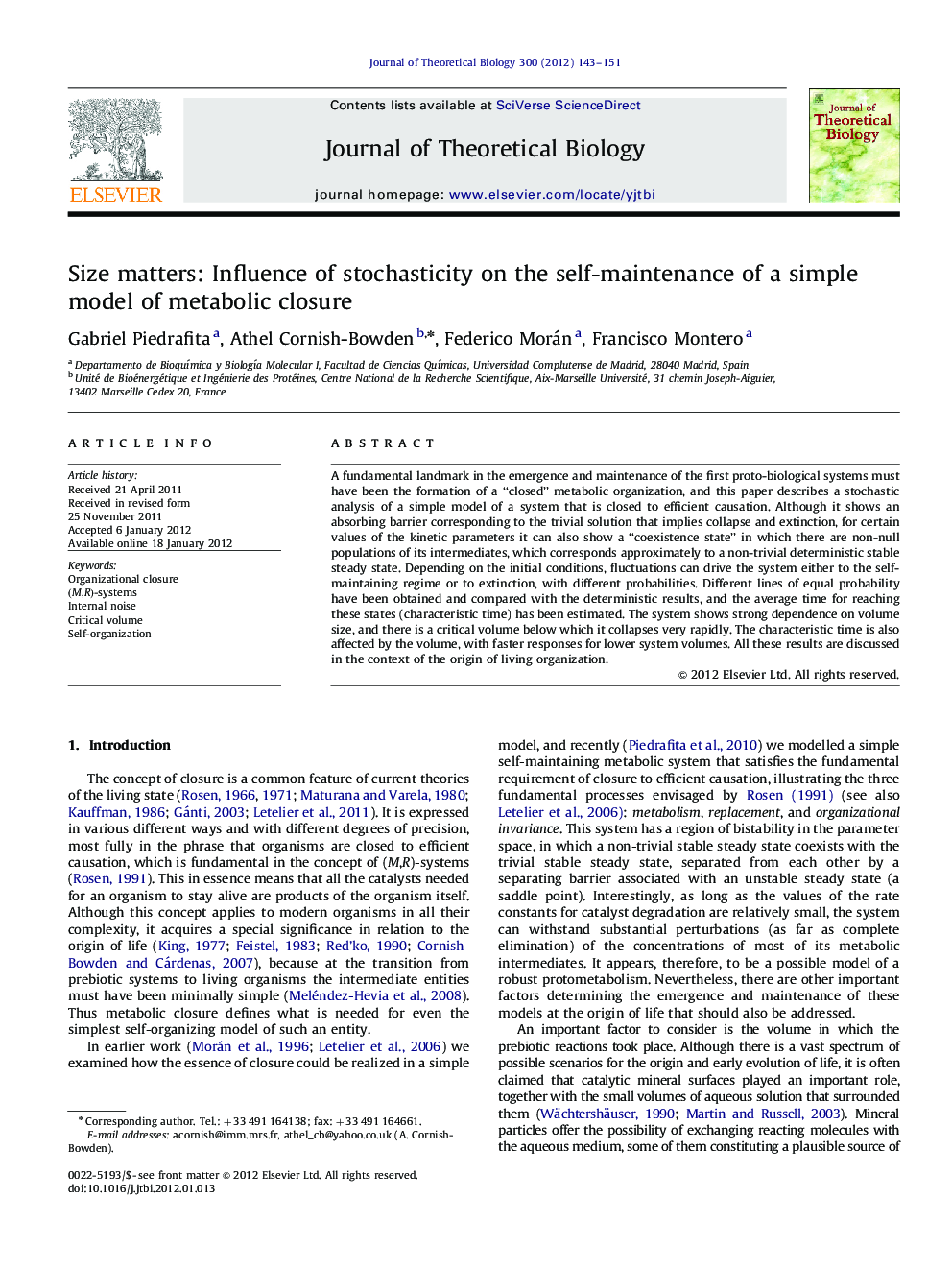| Article ID | Journal | Published Year | Pages | File Type |
|---|---|---|---|---|
| 4496759 | Journal of Theoretical Biology | 2012 | 9 Pages |
A fundamental landmark in the emergence and maintenance of the first proto-biological systems must have been the formation of a “closed” metabolic organization, and this paper describes a stochastic analysis of a simple model of a system that is closed to efficient causation. Although it shows an absorbing barrier corresponding to the trivial solution that implies collapse and extinction, for certain values of the kinetic parameters it can also show a “coexistence state” in which there are non-null populations of its intermediates, which corresponds approximately to a non-trivial deterministic stable steady state. Depending on the initial conditions, fluctuations can drive the system either to the self-maintaining regime or to extinction, with different probabilities. Different lines of equal probability have been obtained and compared with the deterministic results, and the average time for reaching these states (characteristic time) has been estimated. The system shows strong dependence on volume size, and there is a critical volume below which it collapses very rapidly. The characteristic time is also affected by the volume, with faster responses for lower system volumes. All these results are discussed in the context of the origin of living organization.
Graphical AbstractFigure optionsDownload full-size imageDownload as PowerPoint slideHighlights► A small closed model of a metabolism can maintain itself in spite of continuous degradation of its catalysts. ► This applies even in a very small volume with stochastic simulation with finite numbers of molecules. ► Although only one true steady-state is possible in which all fluxes are zero. ► A non-null quasi steady state can also appear and can exist for very long periods of time. ► Long-term stability requires the volume to be greater than about 0.04 aL (4×10−204×10−20 L).
